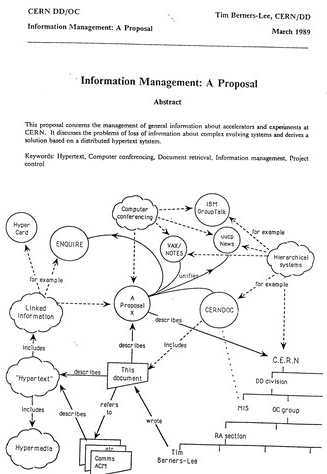World Wide Web celebrates 20th birthday

Almost everyone now can access billions of blogs, web pages, post articles, share what we are doing on social sites, or you can say do anything you want on the Web for free! And we’ve enjoyed free reign because 20 years ago a team lead by Tim Berners-Lee at the European Organization for Nuclear Research (CERN) announced that a project they were working on, to connect computers around the world, which would be later know as the World Wide Web will be available for all.
Other information retrieval systems that used the Internet – such as WAIS and Gopher – were available at the time, but the Web’s simplicity and ease of use and the fact that the technology, with a basic browser and a library of code available, was free, led to its rapid adoption and development.
.In celebration of its 20th birthday CERN, the organization that made World Wide Web technology available on a royalty-free basis, is celebrating the event by recreating the first Web page. The world's first web page will be restored for today's internet browsers as part of a project to celebrate 20 years of free access to the World Wide Web, as the European Organization for Nuclear Research (CERN) said in Geneva on Tuesday.
CERN Director-General Rolf Heuer said in a statement,
The world's first website was about the technology itself, according to Geneva-based CERN, allowing early browsers to learn about the new system and create their own web pages.
The project will allow future generations to understand the origin and importance of the web and its impact on modern life, CERN web manager Dan Noyes told AFP.
More history of the Web
Berners-Lee proposed the Web in 1989 and had a working version in Dec 1990. But by 1993 certain user groups were positioning themselves to try to monopolize the Web as a commercial product. Chief among them was the National Center for Supercomputing Applications at the University of Illinois, which had developed a browser called Mosaic that would later become Netscape. So Berners-Lee and CERN decided to release the code for the Web, believing that software development by hundreds of Web enthusiasts at the time, and millions of people in the future, would always stay one step ahead of any company that tried to control the Web or force people to pay to use it. The decision came at a very tense time that could have ruined the Web’s primary goal as a ubiquitous, open communications platform.
You can read the full back-story in a book that Berners-Lee and I wrote in 1999, Weaving the Web. As Tim explains in the book, when early Web enthusiasts gathered at technical meetings in 1993, “I was accosted in the corridors…. I listened carefully to people’s concerns. I also sweated anxiously behind my calm exterior…. On April 30, Robert [Cailliau] and I received a declaration, with a CERN stamp on it, signed by one of the directors, saying that CERN agreed to allow anybody to use the Web protocol and code free of charge, to create a server or browser, to give it away or sell it, without any royalty or other constraint. Whew!”
With that single step, the Web exploded across the universe. Other information systems that used the Internet, such as Gopher and WAIS, soon faded into the Web’s wake. And no company, not even Microsoft, has ever been able to out-develop the masses.

To celebrate the anniversary, CERN has posted the declaration it sent to Berners-Lee. It is also showing off original Web technology, on a page that has a photo of Berners-Lee from the early days and the NeXT computer he programmed the Web on. The site links to the written pitch Berners-Lee made to CERN, simply titled “Information Management: A Proposal,” for internal funding so he could develop a “wide-area hypermedia information retrieval” system (I’ve shown a small image of the cover, left). Another CERN page shows a copy of the world’s first Web site, which was about the WWW project itself. Berners-Lee also wrote a treatise for Scientific American in 2010 explaining why the Web must forever remain free and how to make sure it stays that way.
